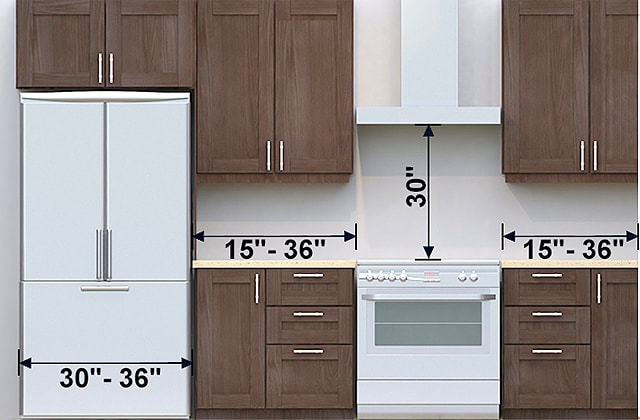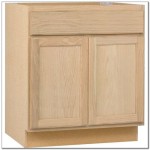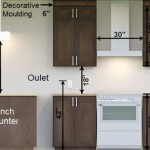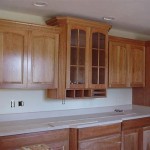Kitchen Cabinet Heights Standard
Kitchen cabinet heights are a crucial aspect of kitchen design, impacting both functionality and aesthetics. Understanding the standard heights for kitchen cabinets is essential for homeowners, contractors, and designers alike, ensuring a kitchen that is comfortable and efficient to use. This article delves into the standard heights for kitchen cabinets, exploring the factors influencing these measurements and providing a comprehensive guide to understanding and applying this knowledge.
Standard Kitchen Cabinet Height
The standard height for base cabinets, those positioned on the floor, is 34.5 inches. This measurement includes both the cabinet box itself and the countertop surface. However, it's important to remember that this is merely a starting point. Many factors, such as personal preference, countertop choice, and appliance integration, can influence the final height of your kitchen cabinets.
Upper cabinets, hung above the countertops, typically sit at a height of 18 inches from the countertop surface. This standard height provides ample clearance for individuals of average height to access the upper shelves without strain. The combined heights of the base and upper cabinets, along with the countertop, usually result in a total height of 84 inches from the floor to the upper cabinet's top.
Factors Influencing Kitchen Cabinet Height
While the standard heights offer a practical starting point, several factors can necessitate adjustments to these measurements.
One critical consideration is the height of the homeowners. A kitchen designed for a family with tall individuals would require a higher cabinet height to ensure comfortable use. Conversely, a kitchen for individuals of shorter stature might benefit from lower cabinets.
Countertop materials also impact overall height. Granite and quartz countertops are typically 1.5 inches thick, while laminate countertops may range from 1 to 1.25 inches. This difference in thickness must be factored into the final cabinet height.
Appliance integration necessitates careful planning concerning cabinet heights. For instance, a built-in microwave requires a specific height to ensure proper ventilation and accessibility. Similarly, installing a refrigerator into the cabinetry demands consideration of its height and depth.
Lastly, personal preference plays a significant role. Some individuals might prefer higher countertops, while others might value lower cabinets for easier access. Evaluating your individual needs and preferences is crucial in deciding on the final cabinet heights for your kitchen.
Adjusting Cabinet Heights
Adjusting kitchen cabinet heights is a common practice to accommodate individual needs and preferences. Base cabinets can be raised or lowered by adjusting the height of the cabinet legs or by adding shims underneath the cabinet box.
Upper cabinets can also be adjusted in height to achieve desired clearances. This adjustment often involves changing the position of the mounting brackets on the wall or using shims to level the cabinets.
It's crucial to consult with a qualified kitchen designer or contractor when making adjustments to cabinet heights. They can provide expert guidance and ensure that the changes are made safely and correctly, maintaining the structural integrity of the cabinets and ensuring optimal functionality.
Choosing the right cabinet heights is an important step in creating a kitchen that is not only aesthetically pleasing but also practical and comfortable to use. By understanding the standard heights, considering the influencing factors, and potentially adjusting these measurements when necessary, homeowners can ensure a kitchen that fits their individual needs and preferences perfectly.

N Standard Kitchen Dimensions Renomart

Pin By Nicole On Measurements Kitchen Cabinets Cabinet Dimensions Height

Measure Your Kitchen Cabinets Before Designing The Layout Cabinet Dimensions Height Measurements

N Standard Kitchen Dimensions Renomart

Know Standard Height Of Kitchen Cabinet Before Installing It

Kitchen Cabinet Sizes What Are Standard Dimensions Of Cabinets

Kitchen Unit Sizes Cabinets Measurements Cabinet Dimensions Height

Know Standard Height Of Kitchen Cabinet Before Installing It

Standard Upper Cabinet Height Bulacanliving

Your Kitchen Renovation Measured For Perfection Rona
Related Posts








